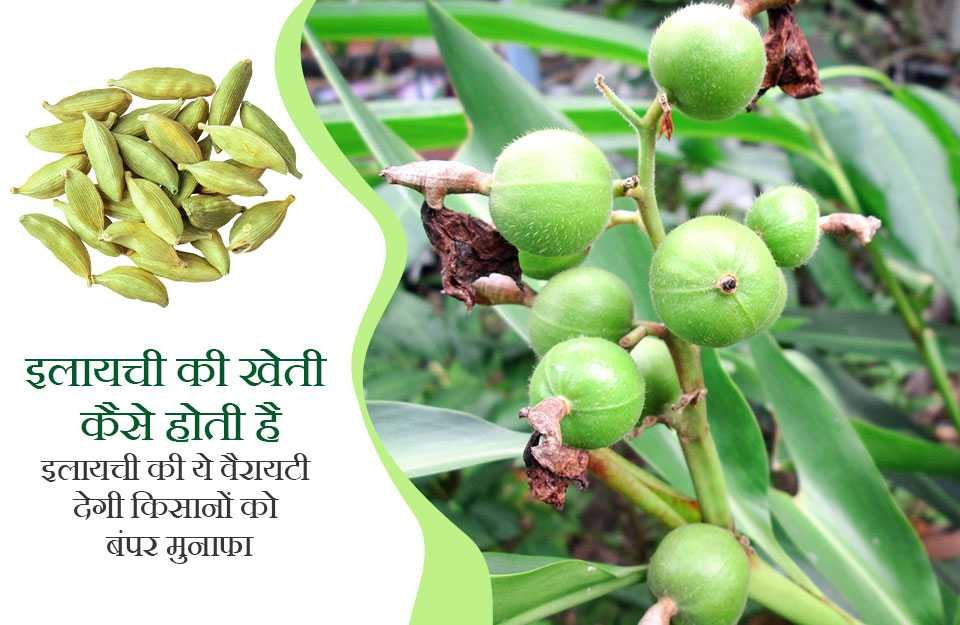
Cardamom is not only popular in India but also highly valued worldwide. In India, it is grown as a cash crop. This aromatic spice, with its small green pods, adds a distinct flavor to dishes. Cardamom cultivation requires approximately 1500-4000 mm of rainfall and thrives in temperatures ranging from 15 to 35 degrees Celsius. It is cultivated extensively for its use as a spice on a large scale. India ranks second in global cardamom production, following China. There is a significant demand for cardamom in markets, where it is used in various events, from weddings to small gatherings. Cultivating cardamom can yield substantial profits for farmers.
Cardamom cultivation is primarily concentrated in Jammu and Kashmir, Madhya Pradesh, and Uttar Pradesh in India. However, due to rising demand, it is also cultivated in Jharkhand, Odisha, Bihar, Haryana, Uttarakhand, Punjab, Assam, Tripura, and West Bengal. According to the National Horticulture Board's report, Kerala witnessed the highest cardamom cultivation in India during 2021-22, with an annual production of 15.54 thousand tons. This is followed by significant cultivation in Karnataka and Tamil Nadu.
The cultivation of cardamom requires soil with excellent drainage, preferably acidic red loamy soil. The soil's pH should ideally fall between 5.5 to 7.5. Cardamom thrives in a tropical climate with temperatures ranging from 10 to 35 degrees Celsius.
Planting Cardamom: To plant cardamom, transfer the seedlings from nurseries into pits. Begin by preparing a mixture comprising 40% cocopeat, 40% vermicompost, and 20% sand in a container or pot. Blend this mixture with the soil and fill the pits. Dig a hole about 2 inches deep and plant the seeds. Space the seedlings at intervals of 20x20 inches and cover the pits with soil. Water the pots as needed when the soil becomes dry. Cardamom plants can also be propagated easily using the cutting method.
Major varieties of cardamom:
Green Cardamom: Green cardamom stands as one of the most sought-after and esteemed spices globally. Recognized for its potent sweet fragrance and floral flavor, it's also referred to as 'Elettaria'. The pods of green cardamom are small and possess a vibrant green hue.
Black Cardamom: Black cardamom, also known as hill cardamom, is cultivated in Nepal, Bhutan, and certain regions of the eastern Himalayas in India. It is the fruit of a perennial herbaceous plant related to the ginger family. It aids in digestion and respiratory health. Black cardamom tends to have a spicier and less sweet flavor compared to green cardamom.
Nepali Cardamom: Nepali cardamom, also referred to as Nepalese or Himalayan cardamom, is mainly grown in the high-altitude regions of Nepal. It possesses a unique taste that enhances the flavor of teas, curries, and rice dishes. The plant thrives in cool and moist climates.
Manure and Fertilizers: Before planting cardamom crops, utilize 10 tons per acre of cow dung manure or compost. For improved yields, apply approximately 25-30 kilograms of nitrogen, 25-30 kilograms of phosphorus, and 50-60 kilograms of potassium per acre. These fertilizers should be applied to the field between June and July. Ensure adequate moisture in the field during fertilizer application, and reapply them in October or November.
Optimal Time for Cardamom Cultivation
Cardamom plants flourish during the rainy season, with June and July being the prime months for cultivation. It is recommended to plant seedlings in shaded areas. Cardamom yields are higher in areas with less sunlight and cooler temperatures.
Irrigation Management for Cardamom Crop: During the rainy season, cardamom plants require less irrigation. The first irrigation should be conducted immediately after planting the seedlings. In the summer season, irrigation should occur at intervals of 4-5 days. Proper field drainage is essential. Irrigation should be performed every 10-15 days as necessary.
Care of Cardamom Plants: Ensure an adequate water supply to maintain plant moisture and prevent waterlogging. Additionally, ensure that plants receive partial sunlight. Once cardamom plants reach a height of about 4-5 inches, transplant them into larger containers. Regular pruning is advisable as the plants develop.
Read More: How to do Ginger Cultivation and Know Amazing Health Benefits
Medicinal Significance of Cardamom: Cardamom, with its sharp aroma, is utilized in the treatment of various ailments and holds significant medicinal value. It is used to flavor a variety of dishes and is prominent in Ayurvedic medicine for treating colds, coughs, digestive disorders, itching, and heart ailments. Moreover, it is believed to reduce the risk of cancer.